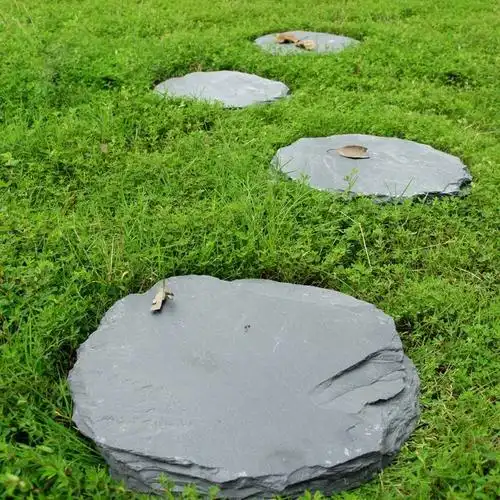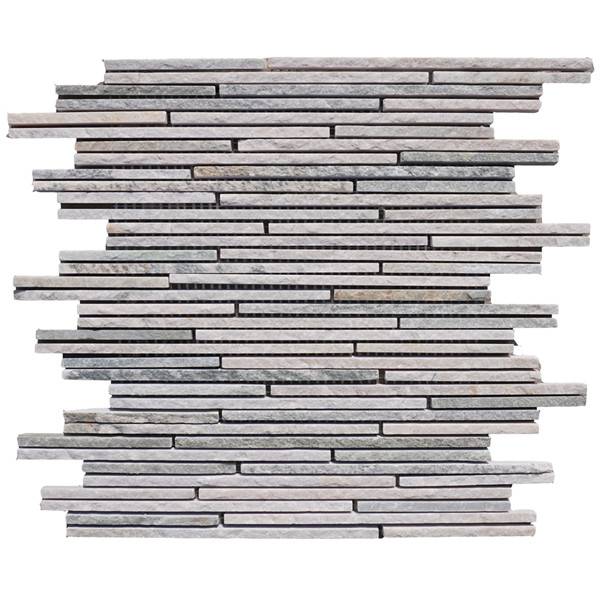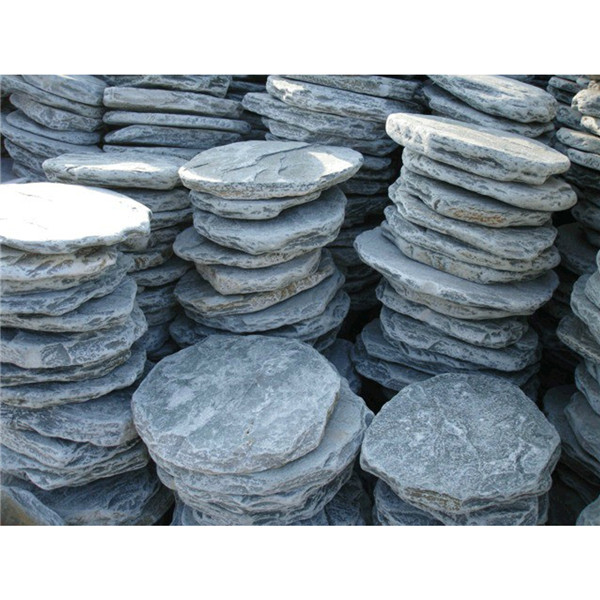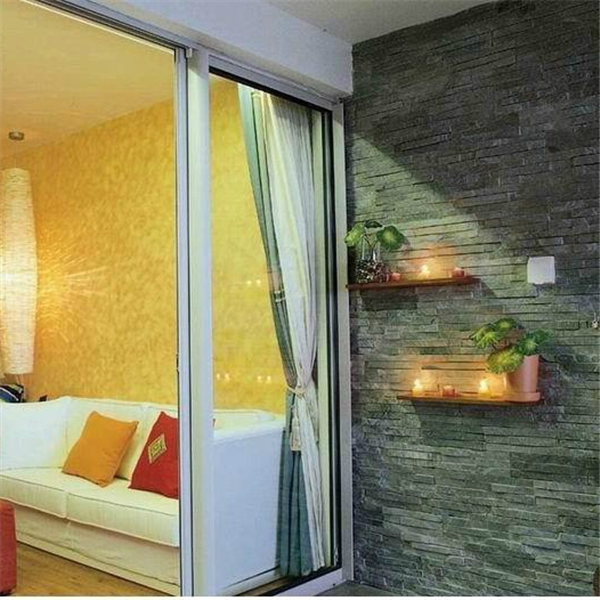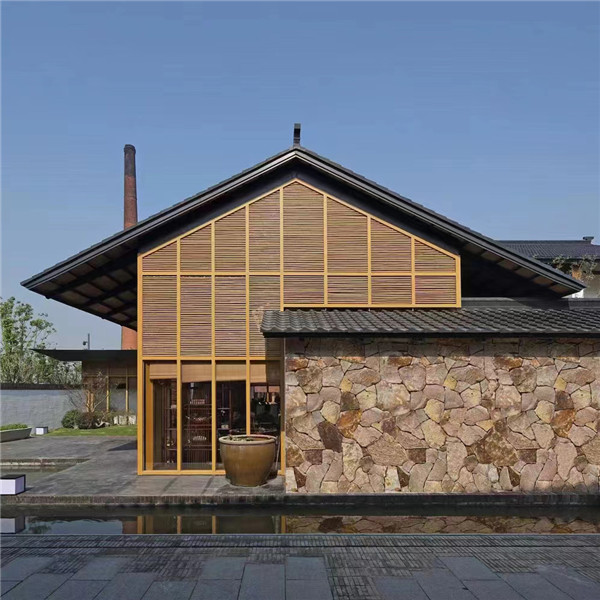Table of Contents
Toggle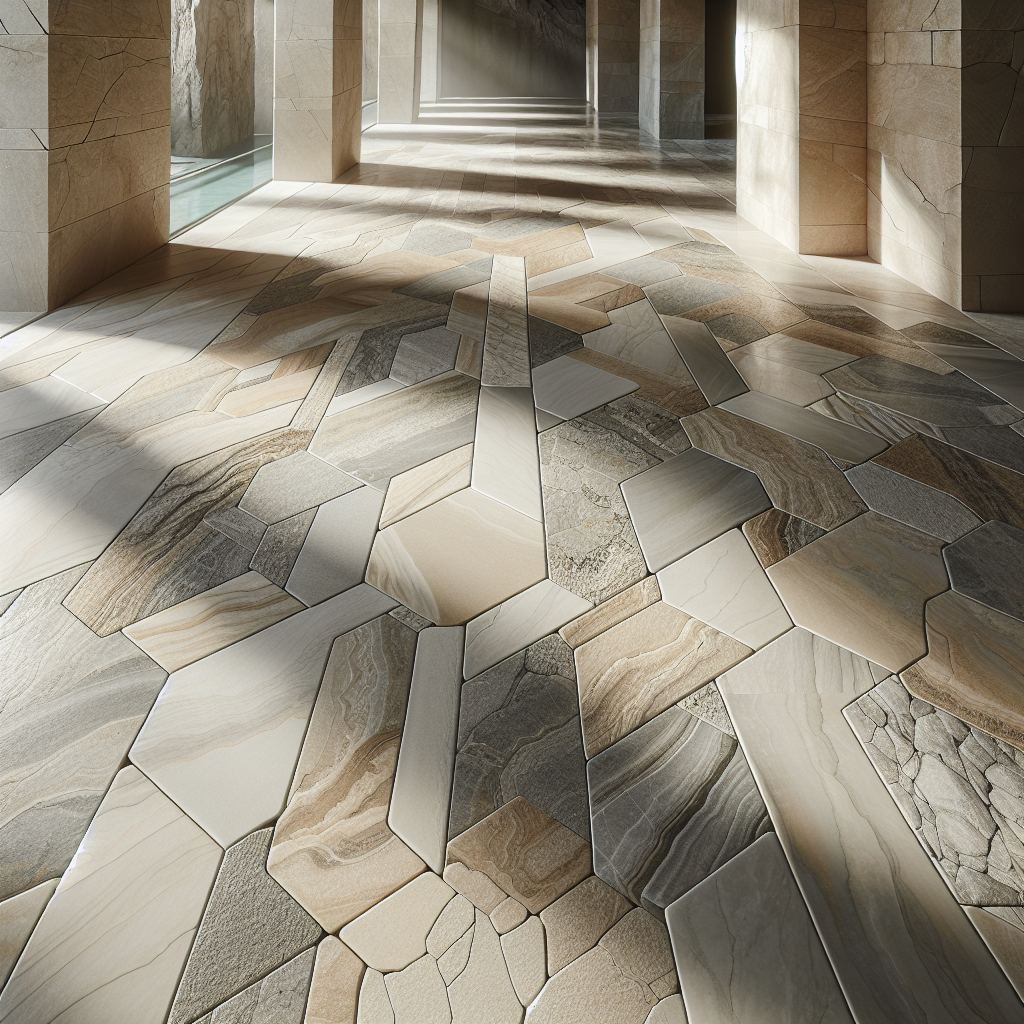
In the design of homes and commercial spaces, stone tile flooring is prized for its unique beauty and long-lasting durability. Stone tile, a popular material with designers and homeowners alike, not only enhances the overall beauty of a space, but also retains its value over time due to its durability and ease of maintenance. From natural stone to artificial stone tiles, there are a wide variety of stone tile flooring options to meet different design needs and style preferences.
In this article, we will delve into various aspects of stone tile flooring, including what stone tile flooring is, its historical background, the different types of stone tiles, the advantages of stone tiles, common uses, and how to choose the right stone tile for your needs. In addition, we will discuss how stone tiles are installed and maintained, as well as how environmentally friendly they are. With this article, readers will be provided with a comprehensive guide on choosing and using stone and tile flooring, both in new construction projects and when renovating an existing space.
What is stone tile flooring
Stone tile floors are a floor covering material widely used in construction and decoration. They consist of natural stone or tiles made through a specific process and have a variety of uses and aesthetic values. The definition of stone tile flooring covers a wide range of stone types such as slate, travertine, limestone, sandstone and granite, each with its own unique characteristics and advantages.
1. Classification of stone tile flooring
Stone tile flooring can be categorized into several different types depending on its raw material and manufacturing process. For example, slate and travertine are mainly used in outdoor environments due to their high weather and slip resistance, while limestone and granite are commonly used for high-end indoor decorations due to their beauty and durability.
2. Application areas of stone tile flooring
Stone tile flooring is not only beautiful but also practical and widely used in residential and commercial spaces. They can be used for indoor floors, walls, and outdoor gardens or walkways, offering a wealth of decorative possibilities and functionality.
3. Major Manufacturers
China’s stone tile flooring industry is home to a number of well-known companies, such as BCSTONE, Emser Tile and Marble, which have gained a strong foothold in the market by providing high-quality products and services.
With in-depth knowledge of stone tile flooring, consumers can choose the right product according to their needs, which not only beautifies the living or working space, but also ensures the durability and safety of the floor.
Historical Background of Stone Tile Flooring
The history of ceramic tiles dates back to 4000 B.C., when the Egyptians began using tiles to decorate various types of houses. They used clay tiles that had been dried or baked in the sun and colored with a blue glaze derived from copper. In addition, a similar process sprang up in Mesopotamia. Tiles were originally made from clay and water and then hardened in a fire, a process that has remained central to tile manufacturing throughout history, although it has undergone some refinements and additive changes along the way.
By 1000 BC, tiles had become a global phenomenon, serving as both decorative and practical objects. The Assyrians, Babylonians and the entire Islamic Empire were making decorative tiles, adding glazes, pigments and adjusting the shape of the tiles. Then the Greeks and Romans began using tiles as well, incorporating them into their own architecture.
China got into the porcelain-making game early and improved upon it. Artisans in the Tang dynasty used a fine white clay called kaolin to create beautiful porcelain, which was introduced to the other side of the world centuries later through Marco Polo. Tiles began to appear in Tunisia in the 9th century and in Iran around the 11th century; many Middle Eastern mosques were decorated with mosaic tiles with colorful reliefs and Koranic texts.
From the 13th and 14th centuries, thanks to the Holy Roman Empire, which had incredible financial resources, European churches were filled with decorative tiles and intricate mosaics. England followed this trend and many religious sites were decorated with extremely expensive handmade glazed tiles. By the 16th century, the Moors of Morocco were also displaying their exquisite work in tiles, which spread to Spain as well, appearing on the walls, floors and ceilings of Moorish palaces such as the majestic Alhambra in Granada.
These tiles, known as Zellige, are still being made today and each color, shape and pattern has a specific meaning and deep spiritual symbolism that, once completed, spells out a ‘story’ nourishing the soul of the onlooker. Meanwhile, Spain and Italy were busy inventing and perfecting a stunning tin glaze for the decorative and vivid majolica tiles. These brightly colored tiles continue to exemplify true Mediterranean living.
Types of Stone Tile
Popular for their realistic grain, color and texture of natural marble, marble tiles combine the durability of ceramic tile with the beauty of marble for low-traffic areas such as bathrooms and back splashes. These tiles are superior to natural stone in terms of decorative effect and are easy to maintain and less likely to be damaged by acidic liquids.
Granite tiles combine the hard properties of granite with the lightweight nature of ceramic tile for environments that require abrasion and pressure resistance, such as kitchen countertops and floors. These tiles offer high hardness, scratch and heat resistance properties and are not easily damaged by everyday household acids such as citrus and vinegar.
Favored for its variety of colors and natural textures, limestone tiles are often used to create classic or contemporary interior effects. Limestone’s main component is calcite, which makes it easy to cut and shape, but its porous nature also makes it susceptible to water absorption and staining, so it requires regular maintenance to keep it looking good.
Slate tiles are widely used in outdoor environments such as gardens and walkways for their distinctive rustic natural look and wear resistance. Its textured surface provides good slip resistance and is ideal for pool decks and outdoor walkways.
Quartzite tiles are formed from sandstone and quartz crystals under heat and pressure, offering a unique granular texture and weather resistance for outdoor use. Its natural cracked finish makes it ideal for waterside exposed environments.
Sedimentary rock tiles, such as sandstone, are formed from sand, clay and other organic materials with earth tones and exotic bands of color. The hard texture of this tile makes it suitable for outdoor surfaces, but care needs to be taken to prevent damage caused by wear and tear.
Advantages of stone tiles
Durability
Stone tiles are known for their exceptional durability and can withstand prolonged use without damage. Natural stone contains no health-hazardous elements and is a completely fire-retardant building material that does not release harmful substances, even in a fire. This durability makes stone tiles ideal for high-traffic areas such as commercial spaces and public places.
Natural Beauty
Each piece of natural stone has a unique texture and color, giving it a natural and artistic look. The natural beauty of stone can add an air of elegance and class to any space, especially when using high quality stone, which cannot be replaced by man-made products.
Thermal conductivity
The thermal conductivity and heat storage capacity of stone allows it to store heat in winter and help cool the space in summer, realizing the effect of warmth in winter and coolness in summer. This characteristic not only improves the comfort of living, but also helps to save energy and reduce emissions.
Uniqueness
Stone tiles can be custom cut to meet the specific needs of the user, and the flexibility of shapes and sizes greatly enhances the possibilities of personalizing the design. Whether it is a traditional or modern architectural style, stone tiles offer unique solutions to meet the needs of different consumers.
These advantages of stone tiles make them occupy an important position in architectural and decorative materials, excelling in aesthetics, practicality and environmental friendliness.
Common Uses of Stone Tiles
Stone tiles are widely used in various architectural and decorative applications due to their beauty and durability. Here are some of the main common uses:
Residential flooring
Stone tiles are ideal for residential flooring, especially for living rooms, dining rooms and hallways. These areas typically have high traffic and require a material that is resistant to wear and tear. Not only are stone tiles durable, but they also add beauty and style to your home.
Kitchen Countertops
Using stone tiles for kitchen countertops provides a sturdy and easy-to-clean work surface. Granite and marble tiles, in particular, are a popular choice in kitchens due to their heat and scratch resistant properties.
Bathroom walls
Using stone tiles on bathroom walls not only repels water and moisture, but also creates a luxurious visual effect. The diverse texture and color options of stone tiles make them ideal for designing a personalized bathroom space.
Exterior Paving
Stone tiles are also ideal for use in outdoor environments such as garden paths, patios and terrace floors. Their high weather resistance and anti-slip properties ensure safe and long-lasting exterior paving while beautifying the outdoor space.
How to choose the right stone tiles
Consider the installation location
The first thing you need to consider when choosing the right stone tiles is the installation location. Different areas require different tiles. For example, outdoor areas or high-traffic areas need to choose tiles that are hard-wearing and weather-resistant, such as granite or slate. Indoor areas that are less traveled, such as bathrooms or kitchens, can opt for travertine or marble, which are aesthetically pleasing but require more frequent maintenance. Additionally, areas with high humidity should choose tiles that are slip-resistant and have low water absorption to prevent slips and water damage.
Consider the budget
Stone tiles vary widely in price, from affordable ceramic tiles to high-end marble tiles. Budget is an important consideration when choosing tile. If budget is limited, consider vinyl or laminated tiles, which mimic the look of natural stone while offering the benefits of durability and ease of maintenance. For those willing to invest in stone tiles for long-term durability and beauty, choosing natural stone such as granite or marble would be a better option.
Consider Maintenance Requirements
Different types of stone tiles have different maintenance requirements. Natural stones such as marble and travertine require regular sealing to prevent stains and water damage. Ceramic and porcelain tiles, on the other hand, are usually easier to maintain and do not require frequent sealing treatments. The ease and cost of maintenance should be considered when choosing tiles to ensure that the material you select can accommodate the maintenance capabilities of your home or commercial space.
Installation and Maintenance of Stone Tiles
Installation and maintenance of stone tiles is a critical step in ensuring their beauty and durability. Below are some basic installation and maintenance guidelines:
1. Preparation before installation
Before installing stone tiles, you first need to ensure that the installation surface is flat, clean and firm. For flexible stone, cutting and adhesive mixing are also required. Substrate treatment should remove all grease, floating dust and loose material to ensure that the back of the stone and the surface of the substrate is clean.
2. Installation method
Stone tiles can be installed by wet paste or dry hanging. Wet sticking usually involves the use of cement mortar to stick the stone directly to the floor or wall. Dry hanging involves the use of metal frames and fixings to secure the stone to the building structure, and is suitable for larger or more weather resistant stones.
3. Cleaning and Maintenance
Stone tiles need to be cleaned regularly to remove dust and dirt and to prevent damage and wear. Special stone cleaners should be used and the use of water should be minimized. For floors that are easily slippery, non-slip solvents can be used to improve their safety.
4. Special treatment
For stones that are easily discolored or damaged, such as marble, special conditioners and polishes can be used regularly to maintain their appearance and durability. Anti-slip treatment is especially important in wet or greasy environments to prevent slip and fall accidents.
By following these steps, stone tiles can be effectively installed and maintained to ensure their long-term beauty and functionality.
Environmental friendliness of stone tiles
The advantage of stone tiles as an environmentally friendly building material is that the process of using them has less impact on the environment. First of all, the production of stone tiles mainly uses natural materials, which are sustainably obtained and do not cause resource depletion. In addition, stone tiles have relatively low energy consumption in the production process, reducing the burden on the environment.
Stone tiles are environmentally friendly in a number of ways. For example, their high durability means that they are replaced infrequently, which reduces the generation of waste and the re-exploitation of resources. The durability of the tiles also reduces long-term maintenance costs, providing both economic and environmental benefits. Stone tiles are fire resistant and do not release hazardous substances in a fire, ensuring safety in use and reducing potential environmental pollution.
In addition, stone tiles have a low water absorption rate, a characteristic that makes them perform well in humid environments and are less likely to harbor bacteria and mold, helping to maintain indoor air quality. Low water absorption tiles also mean better stain resistance and easier cleaning, reducing the amount of cleaners used and their environmental impact.
It’s worth noting that more and more manufacturers of modern stone tile production are focusing on eco-friendly design and using recycled materials to make tiles, which not only effectively utilizes waste, but also reduces the environmental stress of the production process. This recycled production model shows the stone tile industry’s active exploration and practice in environmental protection.
Through the above analysis, it can be seen that the stone tile in the choice of materials, production process and service life and other aspects of its environmental protection, is the ideal choice of environmentally friendly materials in modern construction and decoration.
Conclusion.
Through the in-depth discussion in this paper, we have gained a comprehensive understanding of the types of stone tile flooring, its historical background, its advantages, and its wide range of applications in construction and decoration. Stone tiles have become the preferred material for designers and homeowners because of their durability, aesthetics and environmental friendliness, and their unique charm and practical value can be seen in both commercial spaces and family homes. Through an in-depth understanding of the different types of stone tiles, consumers can choose the most suitable stone tiles for their space according to their own needs and design preferences, creating both beautiful and comfortable living and working environment.
In the future, the application of stone tiles will be more extensive, technological advances and design innovation will continue to promote the diversification of stone tile products and personalized development. We look forward to stone tiles can maintain its traditional advantages, based on innovative design and environmental technology, for modern construction and decoration to bring more green, healthy, and aesthetic new choices. Although selecting and maintaining stone tiles requires some attention and effort, the long-term beauty and value they bring is irreplaceable and worth every homeowner’s investment of time and resources to select and maintain.




